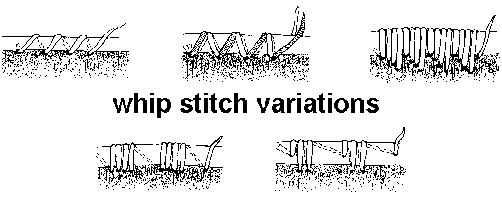

For as long as there have been birch trees in New England, Native Americans have recognized the special uses to which the bark of this tree could be put. Native Americans of the Northeastern Forests made wide use of the outer bark of white (or paper) birch for canoe construction and wigwam coverings. Long before the arrival of Europeans and even before the development of ceramic vessels 3000 years ago, bark containers were used to collect, store, cook and consume food or other products. Birch bark was also used to make hunting and fishing gear; musical instruments, decorative fans, and even children's sleds and other toys. Birch bark designs were also used in beadwork. Although few Native Americans in southern New England still make these items from birch bark, more recent decorative arts, such as splint basket decoration, draw upon many patterns developed in birch bark.
Removing the bark from a live birch threatens the health of that tree. If the dark inner bark of the birch tree is damaged this can kill the tree. Harming a tree only for pieces of its bark is not advised. Fortunately because of the remarkable preservative properties of birch bark, it is possible to use the bark from dead or fallen trees to make containers and other items.
There are several types of birch trees and the best type of bark for items from canoes to containers is the paper birch, sometimes called white birch. Do not confuse this bark with that of the gray or wire birch which is often referred to as white birch but is not as suitable for craft work. The bark from the sweet or black birch is rough and completely unsuitable for craft work but is the source of wintergreen, and from which Native Americans brewed a tea high in vitamin C.
Although the bark from fallen trees may be gathered at any time, the best time for gathering live birch bark was spring up until the month of June. This bark is the thickest, retaining the dark brown inner bark which formed from flowing sap in winter. In this season the bark will recoil easily from the tree and almost peels itself. To peel bark sheets from the tree, a vertical slit is made down the trunk. For smaller projects, sections about two feet long can be peeled from around the trunk by prying up using your hands between the dark bark on the interior of the birch sheets and the hard inner wood of the tree.
To store bark for later use, lay out the sheets and gently press them flat. Put weights on top of the bark sheets to prevent them from curling up, as birch has a tendency to do on its own. Fresh bark can be worked without special preparation. If stored bark or bark from fallen trees is used, the bark should be heated by soaking in warm water, or by steaming over a fire. Heat warm the sap retained in birch bark even after several months in storage and will render even old bark pliable and flexible to be cut and bent. If the bark is very thick, several layers of white paper may be peeled away to make the remaining sheet easier to cut or fold.
Paper patterns are ideal to practice with. To assure a symmetrical pattern and to practice the folding methods, cut a pattern from heavy paper and "stitch" the item with a modern stapler. Paper patterns can be made larger or smaller, scaled to fit the available piece of bark.
To ensure straight, even folds, it may be necessary to score along the fold with a dulled point that creases but does not cut the bark on the inside of the container.
Holes for stitching or lacing may be made by piercing the layers of bark with an awl or large needle with a triangular point. Holes made along seams where bark overlaps may be temporarily held in place using small wooden pegs or splinters of wood. Clothes pins and large paper clips are also useful in holding rims in place as they are stitched.
Seam stitching and rim wrapping are accomplished using lacing. Modern lacing may be heavy waxed nylon thread strung through a needle. Using natural material available to Native Americans, lacing would be made of basswood or dogbane cord, of thin strips of inner cedar bark, or from stripped pieces of black spruce roots. Natural lacing should be soaked in warm water before use to make it more flexible.
Stitching together seams:

Rims for containers are not only decorative, but also add reinforcement to an otherwise brittle area on birch bark vessels. Rims may be solid wood like white cedar, split spruce root, or basketry splints. Rims may also be made using a skinny bundle of plant material like sweetgrass. Rims are attached to a vessel by wrapping lacing around the rim material through evenly spaced holes pierced in the bark at the mouth of a vessel. Holes can be patched with a warmed mixture of white pine pitch and charcoal.
Wrapping the reinforced rim:


|
Text and Graphics
© 1994 - Tara Prindle unless otherwise cited. |